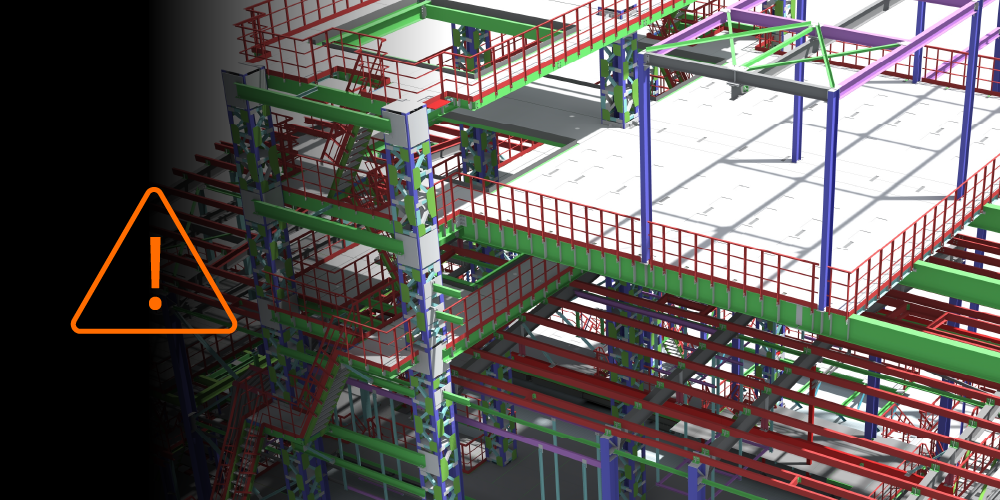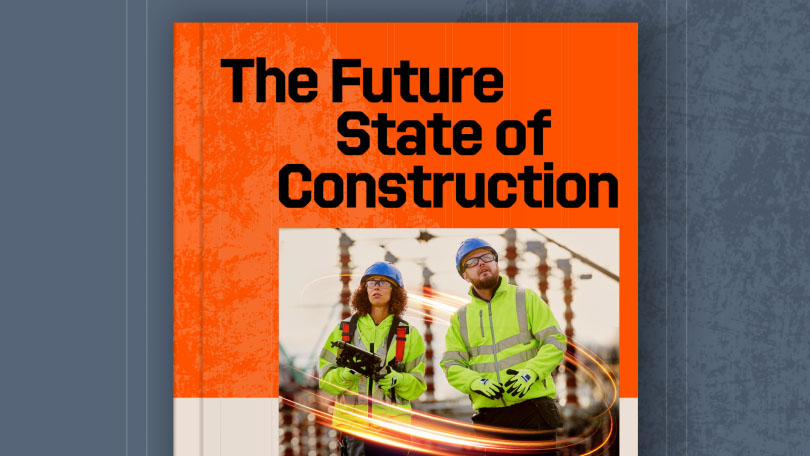Related Articles
— 6 min read
Beyond the Binder: Navigating the Digital Transformation of Construction Documentation

Last Updated Sep 10, 2025

Andrew Janse
Senior Document Controller
Andrew is a highly experienced Document Controller at Hutchinson Builders, with more than 30 years in the construction industry. He plays a key role in ensuring projects operate with the most current and accurate documentation, from design drawings to shop drawings. Starting his career on the Australia Stadium project in Homebush, Andrew taught himself document control by working closely with design teams and even learning computers in the early 1990s. Since then, he has adapted seamlessly to every major industry shift, from carbon copy transmittals and ammonia printing to today’s digital platforms. Always keen to learn, Andrew embraces new technologies and is effective at adopting software systems that streamline project delivery. Known for his strong leadership and people skills, Andrew plays a key role in change management and teaching document control processes, emphasising attention to detail and the importance of following protocols to avoid delays. Respected by colleagues, subcontractors, and clients alike, he is often called upon to guide others on how best to utilise project systems.
Last Updated Sep 10, 2025

Documentation and administration are often invisible to those who live, work, or play in the buildings we construct, but they’re just as critical as the physical foundations beneath them.
In today’s fast-paced construction environment, the core requirements of documentation haven’t changed. Drawings, supplier RFQs, invoices, warranties, inspection reports, and site diaries still need to be impeccably maintained and effectively managed.
What has changed—at light speed—is how we produce, review, distribute, and archive that documentation. Paper folders and filing cabinets are giving way to cloud platforms, automated workflows, and real-time collaboration. This evolution creates both challenges and opportunities for project teams. Managing documentation now requires more than just organisation—it demands smart systems, digital tools, and dedicated professionals who understand both the detail and the bigger picture.
Table of contents
From Carbon Copies to Connected Workflows
The term ‘carbon copy’ has entered the vernacular to describe two things or people that are nearly identical. But in the 1970s and 1980s, it was a literal part of construction documentation.
Producing typed schedules, invoices, contracts and specifications using carbon paper was standard. Transmittals were manually handled, and signatures meant chasing down individuals for a physical pen-on-paper endorsement—then physically forwarding the documents to the next destination.
Distribution records were also produced in carbon copy and filed physically. Drawings and site documentation were stored in massive lever-arch binders, and site sheds required both filing cabinets and drafting tables.
Where duplicates were needed, ammonia copying machines (and later large, often unreliable photocopiers) did the job—albeit slowly, messily, and not without regular frustration.
The Digital Shift
While sites and projects are not entirely paperless in the 2020s, the introduction of digital tools and digital communication has streamlined how we manage documentation and coordination.
Drawings are now created using CAD or BIM software and can be shared instantly, reducing the friction of version control. While physical copies are still printed for site display and compliance, most communication and updates happen in the cloud.
On a big project I might have three large printers, because it means if one has issues, then we’re not held up while we wait for the technician to come out. But even then, the goal is to make digital our source of truth.
Andrew Janse
Senior Document Controller
Hutchinson Builders
The site office may still have plan racks and the most recent paper plans on display for visibility for trades or site managers. In some states and territories, it is also still a legal requirement to maintain a physical set of the latest drawings in paper-based form on site.
When used well, information management software means fewer email trails, faster updates, clearer accountability, and better collaboration between stakeholders—from subcontractors to engineers to site managers.
Translating ‘Old School’ to the Cloud
Not every document enters the project digitally. Invoices, warranties or receipts may still arrive in hard copy. A smartphone scanner or document control app can digitise these quickly, allowing them to be integrated into the project’s central document management system.
On a human level, when a project engages staff or subcontractors that are new to the specific digital platform and software being used, if the document controller or another member of the project management and administration team invests the time and effort to bring the newcomers up to speed, it will pay off.
The ongoing efficiencies, including improved communication, streamlined coordination and reduced risk of dispute all save the project management team, the document controller and project administration professionals time and energy as the project progresses.
Digital Pens
Digital solutions can also in many circumstances replace the need to chase people for a physical signature using a physical pen.
As part of project set-up, digital forms and templates can be created that are attached to documentation such as invoices and RFQs when they are received. These can have sections for inputting relevant technical data, can include records of timelines, review processes and allowance for digital signoff using something like DocuSign or another in-app feature.
The document controller can also stamp these with a digital stamp to ensure the date of receipt and date of distribution are recorded. This is a crucial element in establishing a chain of custody for information, and ensures decisions and information have a clear audit trail of evidence and accountability.
There will be the occasional case where legal requirements mandate a physical signature in front of a witness. Examples of this include major contracts and the opening of major trust accounts.
I am a JP and as a JP we are not permitted to use digital signing. With any document, you’ve got to stamp it and sign it off and scan it because it's a legal document where you’ve got to create evidence that you signed it with the other person present.
Andrew Janse
Senior Document Controller
Hutchinson Builders
The Hybrid Site
While everything that comes into a project gets digitised, and changes such as markups can be done using an application such as Bluebeam, some people still lean on physical drawings or paper documents to sketch ideas, organise thoughts or conceptualise solutions. If these contribute to project decision-making, they too need to be scanned and digitalised.
I think there will be less reliance on paper in future, but I think people still want to draw on something. We scan everything and digitalise it in the end and it sometimes feels like double-handling with documents.
Andrew Janse
Senior Document Controller
Hutchinson Builders
As people are onboarded into the digital domain, it's not only about what gets filed where—it’s also about the specifics of document conventions, naming rules and version control. These seemingly small details enable teams to retrieve information quickly using digital search tools, and avoid missteps.
“When you are onboarding, you give them guidance on the platform we're using and how we use it.” - Andrew Janse
Specific clients, in particular government projects, may also have detailed requirements for document management, forms, approvals, and distribution. While this can add to the onboarding load, getting it right supports success throughout the project lifecycle.
It also helps lift digital capability across the industry. As subcontractors and suppliers move between projects, the skills they’ve gained using modern document control systems become assets they take with them
Enhanced Flexibility and Project Resilience
Digital processes are also opening up the industry to new ways of working, which increase the breadth of talent it can attract and support diversity. During COVID lockdowns many contractors and consultants became adept at digital collaboration and ways of working, and the capability has remained a positive feature for many businesses.
Document control can be done remotely now. I’ve been working from home since Covid, and it’s testament to how digital systems have truly transformed how we operate.
Andrew Janse
Senior Document Controller
Hutchinson Builders
The digital shift is also reducing the amount of paper-policing involved in project management. Instead of a document controller needing to physically negotiate with consultants or subcontractors to amend documentation or sign it off in a timely manner, digital systems enable virtual reminders, and faster, less confronting communication.
The importance of documentation will, of course, never change, However, progress and technology change is making the coordination and management of it easier. This frees up time, focus and energy within project teams to strive for efficiency and quality improvements in other areas, and helps the industry address some of the chronic issues around compliance, accountability and profitability.
Categories:
Written by

Andrew Janse
Senior Document Controller | Hutchinson Builders
Andrew is a highly experienced Document Controller at Hutchinson Builders, with more than 30 years in the construction industry. He plays a key role in ensuring projects operate with the most current and accurate documentation, from design drawings to shop drawings. Starting his career on the Australia Stadium project in Homebush, Andrew taught himself document control by working closely with design teams and even learning computers in the early 1990s. Since then, he has adapted seamlessly to every major industry shift, from carbon copy transmittals and ammonia printing to today’s digital platforms. Always keen to learn, Andrew embraces new technologies and is effective at adopting software systems that streamline project delivery. Known for his strong leadership and people skills, Andrew plays a key role in change management and teaching document control processes, emphasising attention to detail and the importance of following protocols to avoid delays. Respected by colleagues, subcontractors, and clients alike, he is often called upon to guide others on how best to utilise project systems.
View profileExplore more helpful resources

Managing Direct Costs in Construction: How Visibility Drives Profitability
Direct costs define the financial reality of every construction project. They cover the labour, materials, and equipment that drive delivery and determine profitability. But even the best-planned budgets can shift...

BIM Clash Detection: Reducing Rework, Delays, and Risk in Construction
Design clashes can be a significant hidden cost in construction, as each conflict between systems risks expensive rework, project delays, and reduced margins. BIM clash detection empowers teams to identify...

Next-Gen Job-Costing: Ready to Move? 5 Things to Consider Before You Get Started
In this three-part series, Quantity Surveyor turned Financial Solutions Specialist Clint Burgess uncovers the real-world gains for people, processes, and profits when businesses move from legacy to next-generation Enterprise Resource...

From Workarounds to Workflow: Solving Construction’s Legacy Job-Costing System Challenges with Next-Gen Tools
In this three-part series, Quantity Surveyor turned Financial Solutions Specialist Clint Burgess uncovers the real-world gains for people, processes, and profits when businesses move from legacy to next-generation Enterprise Resource...
